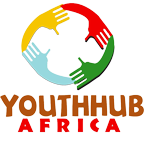The African continent is growing, and it is doing so at an exponential rate. The Africa Pulse, World Bank’s biannual analysis of economic trends and data in the continent projects that economic growth in Sub Saharan Africa is rising from 4.6% in 2014 to 5.2% in 2015-2016 and 5.3% in 2017.
The report highlights that among other key actions, increased public investment in agricultural production is critical in driving growth in the region. Further, it also identifies the gripping challenge facing Africa as a whole; the lagging behind in achieving the Millennium Development Goals particularly in eradicating extreme poverty. Africa has achieved only a third of the poverty target of halving the proportion of people living under $ 1.25 a day.
Why is the continent floundering?
In the case of several African countries, it is evident that growth of the agricultural sector is a paramount component for both rural development and poverty reduction as the sector absorbs the increasing number of job seekers and generates income and livelihoods for others. With majority of the farmers being female, it is then a wonder why women are the poorest African citizens.
In Kenya’s case, the Ministry of Devolution and Planning’s status report on the Millennium Development Goals recognizes that the country is still faced with a wide gap between the genders which emanates from a strong paternal system among most communities as well as traditions and social norms of the past. A large number of women have no tenure security, lack of access to credit facilities, with their contributions most times going undervalued as they are constantly demoralized from meaningfully engaging in the very economic activities that are propelling the country forward.
What then can be done?
Some countries have since revised their constitutions making a number of positive changes for women, especially economically. This includes increasing women’s access to institutions and justice; and ability to control and use property. Customary laws which contradict new legislation many of which cement gender inequality are also now considered invalid in these countries.
Is this enough? No
It no longer is tacit information that empowering girls and women yields undeniable returns for everyone in the community. When women work, they invest 90% of their income back into their families, compared with 35% for men. Inclusion of women postulates higher incomes in households, better wellbeing of children and future generations subsequently reducing poverty across the spectrum.
Policy alone therefore does not affirm women’s progress. Our satisfaction or dissatisfaction when addressing gender parity should be based on performance indicators. There needs to be deliberate and vigorous efforts by all development partners to ensure strong visibility, actionable commitment and implementation of this.
“The question of women’s equality must be in the minds of all decision-makers, at all times, and in all the different phases of conceiving and executing plans for development. Conceiving a development project without the participation of women is like using only four fingers when you have ten. It’s an invitation to failure.” Thomas Sankara
Currently, UN Member States, the UN system, civil society organizations, academia, research institutions and other stakeholders around the world are engaged in various processes to negotiate a new global framework for sustainable development – the post-2015 development agenda. As we move from the Millennium Development Goals (MDGs), several stakeholders are actively advocating for a development framework, which integrates a comprehensive strategy that ensures the realization of women’s rights including economic, social and cultural rights, and civil and political rights.
The 3rd International Review Conference on Financing for Development that will be held in July 2015 in Addis Ababa is a crucial process that will aim to address the financing needs for sustainable development. At the moment, Member States are looking towards the conference to come up with an integrated policy framework that changes existing patterns of mobilization and effective use of all sources including public and private, domestic and international finance.
A regional strategic meeting on the Post-2015 development agenda and financing for development is being organized by FEMNET, the Post 2015 Women’s Coalition and AWDF this week. The organizers recognize the intersectional manifestations and challenges to women’s rights and gender equality. The main aim of these regional meeting is to facilitate collective action and create a space for organizing for the upcoming Financing for Development Conference in the Continent. Got any comments/queries for the meeting? Kindly leave your comments below or tweet me @nm_wangui
………………………………………………………………………………………………………………………………………………………………….
Nyaguthii Wangui Maina is a Pan African enthusiast and activist whose main passion is the youth and girl’s and women’s empowerment; she is a blogger who believes in telling the African story from an African perspective. Nyaguthii volunteers as a weekly columnist of YouthHub Africa; a cyber-community for young Africans involved in social change. She is also keenly interested in governance, democracy and policy issues and blogs on the African Union Commission’s DGTrends platform. In Kenya, Nyaguthii is an advocate of the High Court of Kenya and works with the Permanent Mission of Kenya to the UN offices in Nairobi. She tweets @nm_wangui and blogs here



